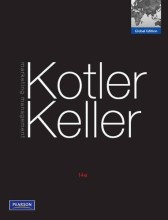Summary: Leereenheid 1 - Ecologie En Evolutie
- This + 400k other summaries
- A unique study and practice tool
- Never study anything twice again
- Get the grades you hope for
- 100% sure, 100% understanding
Read the summary and the most important questions on Leereenheid 1 - Ecologie en evolutie
-
1 Ecology and how to do it
-
1.2.1 Questions of scale
-
What is ecological succession?
The successive and continuous colonization of a site by certain species populations, accompanied by the extinction of others. -
2 Ecology's evolutionary backdrop
-
2.2 Evolution by natural selection
This is a preview. There are 2 more flashcards available for chapter 2.2
Show more cards here -
What are the 4 truths of the theory of evolution by natural selection?
- Individuals that form a population of a species are not identical.
- Some of the variation between individuals is heritable.
- All populations could grow at a rate that would overwhelm the environment; but in fact, most individuals die before reproduction and most (usually all) reproduce less than their maximal rate.
- Different ancestors leave different numbers of descendants: they do not all contribute equally to subsequent generations. Those that contribute most, have the greatest influence on heritable characteristics of subsequent generations.
-
2.3.1 Geographic variation within species
-
When does evolution force the characteristics of populations to diverge?
- Only if there is sufficient heritable variation on which selection can act; and
- provided that the forces of selection favoring divergence are strong enough to counteract the mixing and hybridization of individuals from different sites.
-
When will 2 populations not diverge completely?
If their members are continually migrating between them, mating and mixing their genes. -
What are reciprocal transplant experiments?
A test to see if organisms have evolved to become specialized to their environment, comparing their performance when they are grown at home vs when they are grown away from home. -
2.4.1 What do we mean by a 'species'?
This is a preview. There are 3 more flashcards available for chapter 2.4.1
Show more cards here -
What is a biospecies?
A species that is tested and defined according to previous definition of species. -
When can 2 parts of a population evolve into distinct species?
Only if some sort of barrier prevents gene flow between them. -
2.7 Interpreting the results of evolution: convergents and parallels
This is a preview. There are 2 more flashcards available for chapter 2.7
Show more cards here -
What are analogue structures?
Structures that are similar in superficial in form or function. -
What are homologue structures?
Structures that derive from an equivalent structure in a common ancestry. -
8 Evolutionary ecology
-
8.2.3 Differentiation between species: the red wolf !!!
-
How does the red wolf relate to the grey wolf and the coyote?
The red wolf is a hybrid arising from interbreeding between grey wolves and coyotes.
- Higher grades + faster learning
- Never study anything twice
- 100% sure, 100% understanding































